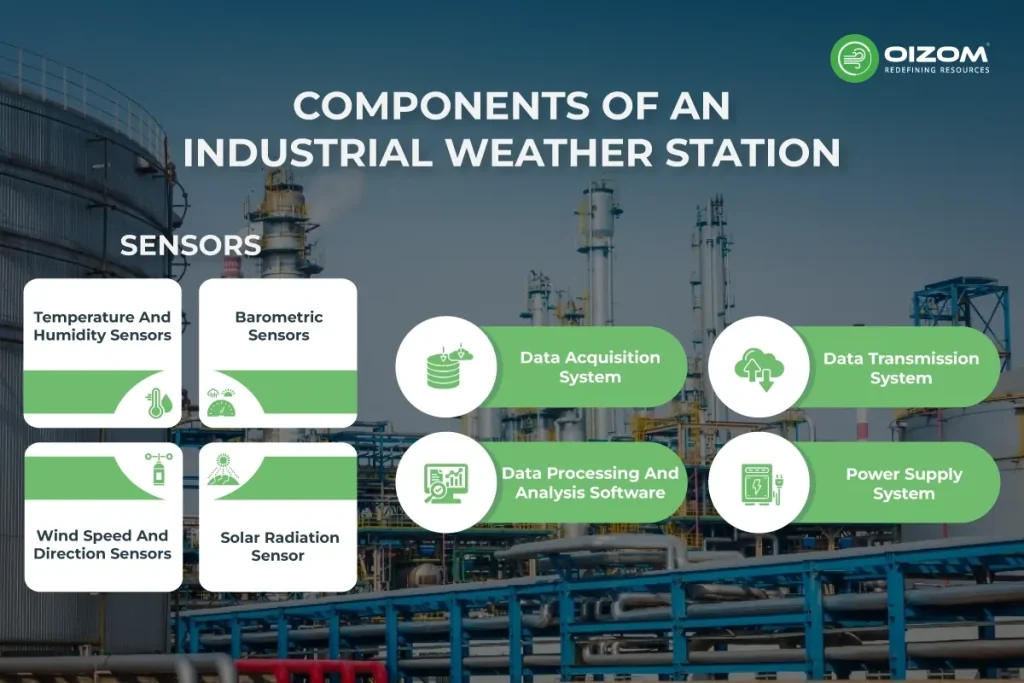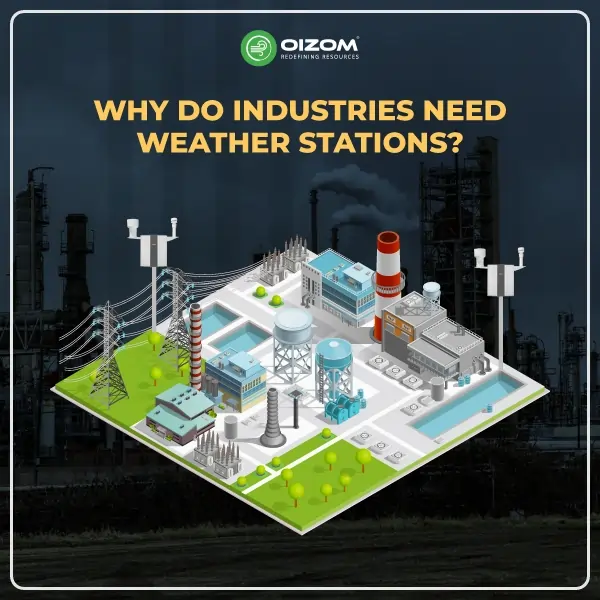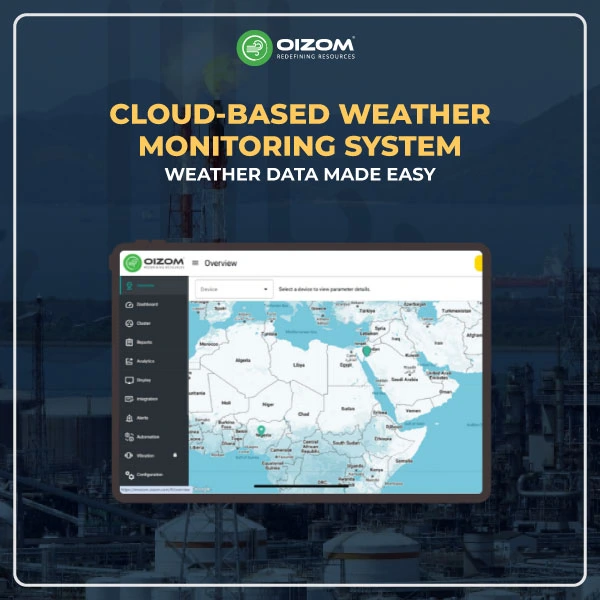10 Key Takeaway Points:
- Critical Role of Weather Stations: Weather stations are essential for industries to ensure worker safety, protect equipment, and improve productivity.
- Real-Time Insights: Modern weather stations provide real-time data on temperature, humidity, wind, air pressure, and solar radiation, enabling informed decision-making.
- Industry Applications: Sectors like oil and gas, manufacturing, agriculture, and water management rely on weather data to plan operations, reduce risks, and save costs.
- Key Features: High accuracy, durability, versatile monitoring, real-time data logging, and seamless connectivity make weather stations indispensable.
- Essential Sensors: Sensors measure temperature, wind, air quality, harmful gases, and solar radiation, serve to industry-specific needs.
- Durability for extreme Conditions: Industrial weather stations are built to withstand extreme temperatures, humidity, and corrosive environments.
- Solar Power and Connectivity: Solar-powered options and flexible network connectivity (Wi-Fi, GSM, LoRa, Satellite) make them suitable for remote or off-grid locations.
- Customization and Integration: Stations can integrate with SCADA and other platforms, offering tailored solutions for industrial applications.
- Proper Installation and Maintenance: Correct setup and regular upkeep ensure accurate readings, reliable performance, and long-lasting operation.
- Future Preparedness: Investing in a weather station helps industries tackle current challenges and prepare for future uncertainties, driving efficiency and sustainability.
Why do Industries Need Weather Stations?
Have you ever thought about how industries keep running smoothly despite changing weather conditions? From ensuring worker safety to protecting equipment and improving productivity, weather plays a big role in industrial operations. This is where weather stations make a real difference.
Modern weather stations do more than just tell us the temperature or if it’s going to rain. They provide detailed, real-time information about things like temperature, humidity, wind speed, air pressure, and solar radiation. For industries, having this data can prevent delays, reduce risks, and improve planning. For example, a construction site can avoid accidents by knowing about upcoming storms, or a solar plant can adjust its operations based on sunlight levels.
Industries like agriculture, mining, energy, and manufacturing rely on weather data to make smarter decisions, save costs, and minimize their environmental impact. Weather stations help businesses stay prepared, efficient, and safe. In this blog, we’ll explore how weather stations support industries and why they’re becoming a must-have tool. Let’s get started!
Purpose and Importance in Industries
Weather monitoring systems are vital for industries like manufacturing, oil and gas, and water management, ensuring efficiency, safety, and sustainability. These industries face unique challenges where accurate weather data is critical in mitigating risks and improving operations.
- In manufacturing, extreme weather conditions like heatwaves or storms can disrupt production schedules, damage equipment, or lead to worker safety issues. Weather monitoring helps manufacturers plan ahead, avoid downtime, and maintain productivity.
- For the oil and gas industry, weather monitoring is necessary; Offshore operations depend on real-time weather data to avoid hazards like high waves, storms, or extreme temperatures. Monitoring systems also ensure the safety of workers, equipment integrity, and compliance with environmental regulations.
- Oizom Weathercom makes this process simple and reliable. It’s network agnostic, offering multiple connectivity options like GSM, GPRS, WiFi, LoRa, NBIoT, Ethernet, Modbus, Relay, and Satellite. So, whether you’re offshore or in a remote location, staying connected is never a problem. Plus, it’s solar-powered, running completely on solar energy, making it perfect for off-grid locations. With Weathercom, you get accurate, real-time weather data anytime, anywhere, keeping operations safe and smooth.
- In water management, weather data is critical for resource planning. Monitoring rainfall patterns and temperatures helps in managing reservoirs, optimizing irrigation, and predicting droughts or floods. It ensures efficient water usage and supports disaster preparedness.
Key Features of an Industrial Weather Station
- Accurate and Reliable Data: The objective of weather stations is to provide highly accurate weather information, helping industries make critical decisions and ensure smooth production processes.
- Built for Tough Environments: These stations are designed to work in extreme conditions, whether it’s high or low temperatures, high humidity, or exposure to corrosive gases, ensuring durability and long-term performance.
- Versatile Monitoring: Beyond basic weather data like temperature and wind, they can measure industry-specific parameters such as particulate matter, hazardous gases, or even radiation, making them suitable for various industrial needs.
- Data Logging and Connectivity: Industrial weather stations can continuously record data and transmit it in real-time to a control center via networks, ensuring constant access to critical information.
- Customizable and Easy Integration: They can be tailored to fit specific industrial requirements and easily connect with existing systems like SCADA, streamlining operations and enhancing efficiency.
Components of an Industrial Weather Station

The industrial weather monitoring system comprises various components, which are discussed below:
Sensors:
- Temperature and Humidity Sensors: Measure environmental temperature and humidity accurately.
- Barometric Sensors: Track atmospheric pressure for weather prediction.
- Wind Sensors: Measure wind speed (using ultrasonic or hot wire) and direction (using wind vanes or magnetic principles).
- Rain Sensors: Monitor precipitation levels.
- Air Quality Sensors: Detect pollutants like PM2.5, PM10, SO₂, and NOx.
- Harmful Gas Sensors: Measure gases like CO, H₂S, and CH₄.
- Solar Radiation Sensor: Track solar energy levels.
- Data Acquisition System: Collects and processes data from sensors.
- Data Transmission System: Sends data via wired (Ethernet) or wireless (Wi-Fi, 4G/5G, satellite) networks.
- Data Processing and Analysis Software: Analyzes data, generates reports, and supports decision-making.
- Power Supply System: Includes a primary power source and backups like batteries or solar panels for uninterrupted operation.
- Explosion-Proof Design (Optional): Features explosion-proof housing and connectors for safe use in hazardous environments.
Installation and Maintenance
With proper installation and regular maintenance, a weather monitoring system can provide reliable data and long-lasting performance for any application.
Installation:
Choose a clear, open location for the weather monitoring system, away from obstructions like buildings or trees, to ensure accurate readings. Follow the manufacturer’s instructions to properly install your weather station and align sensors, especially wind and solar. Ensure a stable power supply or place solar panels in direct sunlight for solar-powered systems. Test the connectivity options, such as Ethernet, Wi-Fi, or satellite, to ensure smooth data transmission.
Maintenance:
Regular maintenance keeps the system accurate and reliable. Clean the sensors to remove dust or debris that can affect readings. Check for damage caused by weather or wear and replace parts as needed. Recalibrate the system periodically to maintain accuracy. For solar-powered systems, clean the panels and check the batteries regularly. Also, inspect the data transmission system to ensure no information is lost.
How to Select the Right Industrial Weather Station
Selecting the right industrial weather station starts with understanding your needs. What do you need to monitor: temperature, humidity, wind, rain, air quality, or hazardous gases? Make sure the station has the right sensors for your requirements.
Consider the station’s durability and weather resistance. If your operations are in extreme conditions, opt for a system to withstand extreme temperatures, humidity, or corrosive environments.
Connectivity is crucial. Look for a station with network flexibility, such as GSM, Wi-Fi, LoRa, or satellite, to ensure seamless data transmission. If your location is off-grid, choose a solar-powered station for reliable operation. Lastly, think about integration and customization. The system should easily integrate with existing industrial platforms like SCADA and be adaptable to your specific needs.
Conclusion
Industries today face challenges where even slight weather changes can affect operations, safety, and productivity. This makes outdoor weather stations a crucial tool. They provide real-time, accurate data, enabling businesses to plan ahead, make informed decisions, and respond effectively to changing conditions.
Whether it’s protecting workers in tough environments, streamlining logistics, or optimizing production, weather stations play an essential role. For industries like oil and gas, manufacturing, agriculture, and water management, these systems go beyond just providing data, they offer valuable insights that drive efficiency, sustainability, and compliance with regulations.
With durable designs, customizable sensors, and reliable connectivity, weather stations adapt to the unique needs of different industries. Investing in a dependable weather station isn’t just about solving current challenges, it’s about staying prepared for future uncertainties and ensuring long-term success in any environment.






